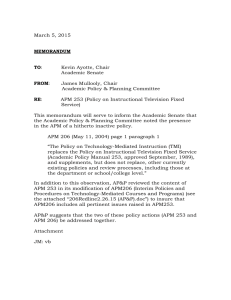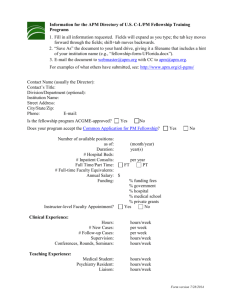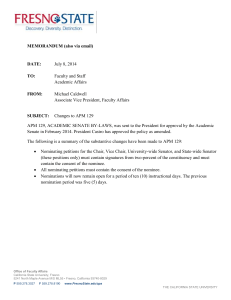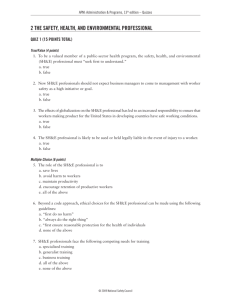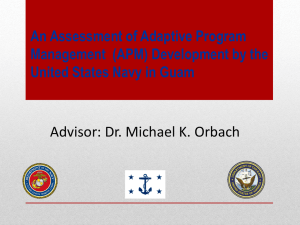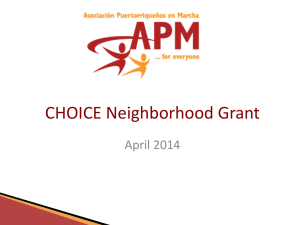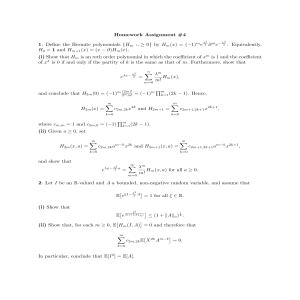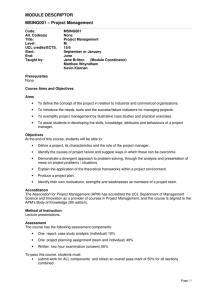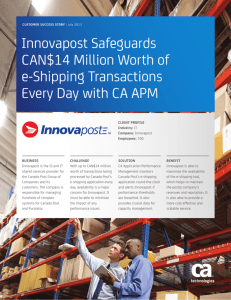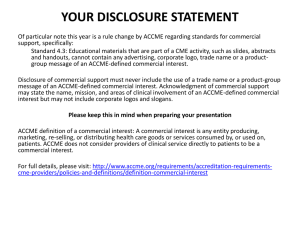ppt - ACRU
advertisement
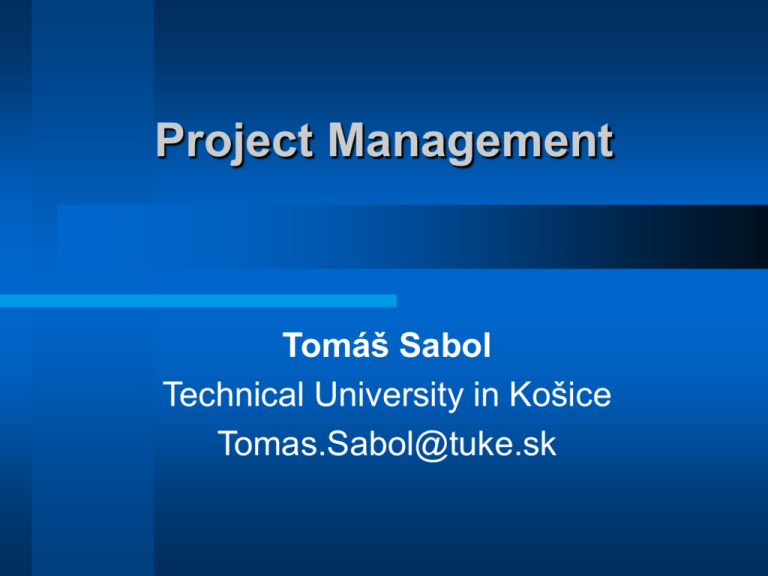
Project Management Tomáš Sabol Technical University in Košice Tomas.Sabol@tuke.sk Contents: What is Project and Project Management? 5 Phases of Project Management: – Define – Plan – Organize – Control – Close What is a project? Characteristics: 1. Complex and numerous activities 2. Finite – with a begin and end date 3. Defined priorities & deadlines 4. Horizontal communication across several functional areas required What is a project? 1. Limited resources and budget 2. Unique – a one-time set of activities 3. Innovative 4. Goal-oriented, must result in an end product/service PROJECT MANAGEMENT Project is successful, if: • Project’s result satisfy defined specification (function, quality, ...) – the result approved by the Project client • Within defined time limit • Within the budget and defined resources Causes of Project Failure: • Wrong definition of problem, definition of problem is constantly changing • No one except the project team is interested in the end result • Inappropriate structure of management • The project plan lacks structure • The project is underbudgeted • Insufficient resources are allocated Causes of Project Failure (2) • The project is not tracked against its plan • Lack of communication between team members • Wrong style of project management • Improvisation, occasional/nonconsistent interventions of a "strong personality“ • Analytical phase was underestimated in the planning phase 5-Phase Project management • • • • • Define Plan Organize Control Close PLANNING + IMPLEMENTATION Phase 1: DEFINING THE PROJECT Project Overview: • General information piece • Statement of the problem and opportunities to be addressed • Early statement of the goal • Serves for decision „Go / Non Go“ Yes Reference base for the Project Project Overview: • Brief (1-2 pages), concise • Goal & Objectives - standard for solving conflicts in future • Close contact wih end users • Answers question „What?”, not “How?” Define the problem Where are you now? What is your expectation? (& Why do you want it?) How do you want to achieve it? When do you want to achieve it? How much are you willing to invest? What resources are available? What risk is necessary to accept? Define the Project … What is the problem/opportunity? What is to be done? Who is responsible for the project? When must the project be completed? Imposed deadline Planned deadline Identify Project Goal Goal statement – action oriented, short, simple, as understandable as possible Defines the final outcome in terms of the end product or services Continual point of reference for settling disputes about the project Guide that keeps all objectives and the work on the track Goal in triangle: Time vs. Costs vs. Quality List the Objectives Criterion S.M.A.R.T.: Specific) Measurable Assignable Realistic Time-related Define the Project … Determine preliminary resources: • Finances • Human resources (how many people, who, when, for what time) • Equipment (how much, when, for how long) • Technologies Identify assumptions and risks Identification of risk and assumptions Risk analysis: Identify risks Estimate probability of risks Design how to prevent negative circumstances Evaluation of possible impact of negative circumstances Contingency (what to do if something wrong happens) Milestones Check points towards the defined objective, achievement of specific subgoal Measuring work progress towards the final goal Project division into phases Deliverable (tangible outcome) is linked to each milestone Roles in the project management • Project manager • Project investor / Sponsor / Top management • Supervisor • Client (end user) • Expert team Example: Planning an Annual Conference Problem: Association of Project Managers (APM) is a new organization. Its future depends on its ability to maintain membership and conduct a successful annual conference. Goal: To secure a upward trend in membership and annual conference attendance. Example: Conference Planning (2) Objectives: • Conduct APM Annual Conference with at least 120 participants. • Net profit from the conference has to be at least $25,000. • Offer two sessions in the program led by internationally recognised experts Example: Conference Planning (3) Succes criteria: • At least 40% members of APM will attend. • 15% non-members receiving invitation will attend a conference. • At least 20% non-members, which will attend a conference, will join APM as new members Example: Conference Planning (4) Assumptions: • Successful Annual Conference will increase interest in membership of APM • Quality professional program will attract members and nonmembers as well Project Overview Acid Test: • Understandable to an outisder • It can be used to “sell” the project (to top management, partners, team members) • Can be used to develop a project proposal • Core project team participated and approved the Project overview TEAM ASSIGNMENT 1 Develop a Project Overview for the „ACRU Continuing Education Project“ with the following items: • Problem • Goal & Objectives • Approach taken, Expected benefits • Assumptions and risks 1st Phase: PROJECT DEFINE Summary • • • • • • Define a project Project characteristics Design of a Project overview Basic parts of the Project overview Functions the Project overview serves Write a Project overview for your idea
![[BRACKETS INCLUDE SUGGESTED INFORMATION THAT MAY BE INCREASED] DEPARTMENT OF FORESTRY](http://s2.studylib.net/store/data/013068471_1-cfecf471b59af83eb9fbee25e61f8411-300x300.png)
